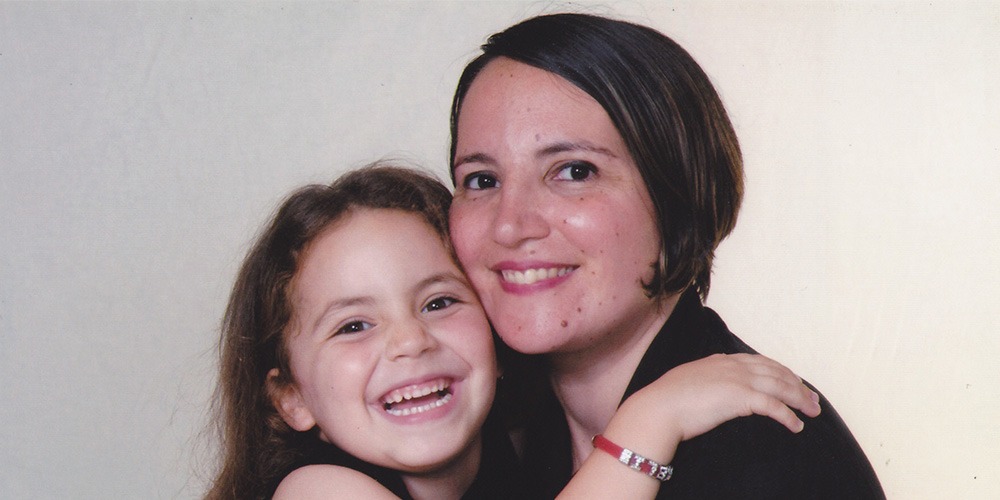Fertility is decreasing worldwide as people have children later in life. Prof. Jean Calleja Agius wants to engage youths to understand reproductive physiology, fertility care, and its preservation.
As an obstetrician and gynaecologist specialising in early pregnancy complications, I routinely work with patients having miscarriages or infertility. Looking back at my 20-years-long lecturing career, I am appalled to see that the Internet age has not addressed the lack of basic reproductive health in my medical students.
My students are not a random sample of the population – most are highflyers with top grades in their Biology ‘A’ Level. And yet consistently, cohort after cohort, I am shocked at their lack of knowledge on their own fertility. I get confused stares as I explain that a normal menstrual cycle can lie anywhere between 21 and 35 days, and when I pose the question of when is the most fertile day in a woman’s menstrual cycle, I get a whole lottery of different answers (the right answer is 14 days before the first day of the menstrual cycle: for example, in a cycle of 21 days, the answer is Day 7, while in a cycle of 35 days, the answer is Day 21). A mobile app will not accurately work that out for you, as it cannot predict exactly when the next cycle will start.

I worry even more when many believe that coitus interruptus (withdrawal) alone is a very safe method of contraception at their age of around 19 years. And what saddens me most is that these are the people taking care of other people and being asked for advice. And if the crème de la crème don’t have the right knowledge, what about the rest of our youth?
For the last five years, I have been the national representative for Malta at the European Society of Human Reproduction and Embryology and also collaborated with the patient support group Fertility Europe. This society aims to increase awareness for fertility education. I try to do so every time I meet my students. Everyone needs this knowledge in their lives.
No time for children
An average medical doctor is 23 years old when he/she gets his/her degree and spends two years working to get the warrant. Specialisation takes around four years. If you have to stop to have children, you fall behind in the race. Next come endless nights on call, till you become a consultant or decide to go solo privately. Only then do you regain control over your life. At that point you can consider starting off a family by your mid-thirties.
The more educated you are, the more likely you believe that natural conception will lead to having a perfectly healthy baby. And if not, science will come to the rescue through assisted reproductive technology. The technology doesn’t always work – despite leaps in technology and understanding since the first ‘test tube baby’ Louise Brown’s birth in 1978, and millions of children conceived this way since then, statistically, the average take-home baby rate is less than 30%, irrespective of the clinic you go to, the country, and its legislation. Think about it. If you were told that you were to undergo a procedure which has a 70% failure rate, would you volunteer? Most likely no.
And if the crème de la crème don’t have the right knowledge, what about the rest of our youth?
But infertile couples would, irrespective of their social standing or education. Maybe that is because of their deeply rooted drive for overcoming stumbling blocks, their belief that by working hard and doing whatever it takes, by hook or by crook, they will achieve their goals. After years of preventing conception, being careful about avoiding the slightest slip that may disrupt career plans and reputation, their maternal/paternal instinct kicks in and keeps them from concentrating on anything.
So professional high achievers are normally the ones who delay their fertility, willingly or unwillingly, putting their faith in modern technology. This, together with the recent advances in cryopreservation, has led to oocyte freezing for social reasons. While the freezing of sperm has been commonplace for decades, successful egg cryopreservation is a recent advance. Freezing a woman’s eggs at age 30 ‘freezes in time’ her fertility potential and gives her the chance of a healthy pregnancy at a time of her choosing. Egg freezing is pricey but has become an increasingly popular lucrative option for women wishing to delay child bearing, or so they think.
Statistically, the average take-home baby rate is less than 30%.
To date, women who use the procedure are mainly those undergoing medical treatments that interfere with fertility, such as chemotherapy. But for increasing numbers of women, the passage of time, not a medical condition, denies them a chance at motherhood. Nowadays even some employers offer egg freezing to high-flying talented women. Corporations like Apple and Facebook offer such benefits, claiming it empowers women to concentrate on work and raise their families at a time of their choice.
Yet by their late thirties, women’s capacity to conceive decreases. Pregnancy complications and miscarriage risk become much higher. Donor eggs are not an easy option because of ethical concerns and supply constraints. But are frozen eggs really a time machine from one’s own youth?
Travel back through time
While egg freezing enhances reproductive autonomy, it is a controversial therapeutic option because of age-related obstetric complications, cost, and the risk of unsuccessful future treatment (see Jones et al., 2018). Social egg freezing may be advertised to harmonise gender differences, but the scientific community is still debating ethical concerns (see Borovecki et al., 2018). The prospect of reproductive immortality may quickly turn into a dangerous delusion.
Egg freezing carries inherent risks. Oocyte stimulation can cause lethal ovarian hyperstimulation syndrome, and the egg harvesting, which involves an operation under anaesthesia, can damage the ovaries and cause adhesions. Few women who have frozen their eggs have used them, making research difficult. Lack of data makes it hard to counsel patients (see Goldman et al., 2017).
The prospect of reproductive immortality may quickly turn into a dangerous delusion.
IVF (in vitro fertilisation) is not a walk in the park. Apart from the financial and emotional rollercoaster, the treatment has severe side-effects, from bruising, bloating, pain, hot flushes, and severe mood swings, to dangerous thrombosis, renal failure, and pulmonary oedema. To top it all, the personal sacrifices which have to be made, like days off work, postponing meetings and business trips, and putting the rest of your life on hold, while trying to keep this matter private, are immeasurable.
As a lecturer and practitioner I advocate for thinking about these issues early. Young people should be equipped with the knowledge they need to make informed choices about whether, when, and how they intend to have children. This needs to start from primary education, and not just wait and see if one manages to enter Medical School to have all this explained!
Planning to have kids? These are the things to Keep in Mind:
- Women are born with all the eggs that they are going to have. At the age of 38, up to 90% are already used up.
- Men start producing sperm from puberty, but the quality declines with age. In one ejaculation, healthy men produce about 100 million sperm. Healthy women of reproductive age have around 500 ovulations in a lifetime – one egg a month.
- Pregnancy is only possible from around 3 days before ovulation up till the day after ovulation.
- Fertility is ageist. Women under the age of 30 years have a 20% chance of getting pregnant each month, and this decreases to 5% at the age of 40. When the male partner is over 45 years of age, there is an increased risk of miscarriage and congenital anomalies.
- Most people (84%) get pregnant within one year of trying. If you have been unsuccessfully trying for more than 1 year (for women over 35 years: over 6 months), it is time to speak to your doctor.
- Sexually transmitted diseases, weight problems (both over- and under-weight), smoking, and alcohol are among the many factors which can lead to infertility.
- The chances of having a baby after one IVF attempt are around 30% in women under 35 years of age, but only about 10% in women between 40 and 45 years of age.
Further reading:
Jones BP et al., The Dawn of a New Ice Age: Social Egg Freezing, Acta Obstet Gynecol Scand, 97 (6), 641-647 Jun 2018.
Borovecki A et al, Social Egg Freezing Under Public Health Perspective: Just a Medical Reality or a Women’s Right? An Ethical Case Analysis J Public Health Res, 7 (3), 1484, 2018.
Goldman RH et al. Predicting the Likelihood of Live Birth for Elective Oocyte Cryopreservation: A Counseling Tool for Physicians and Patients, Hum Reprod, 32 (4), 853-859, 2017.





Comments are closed for this article!